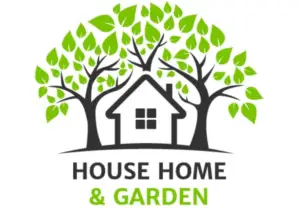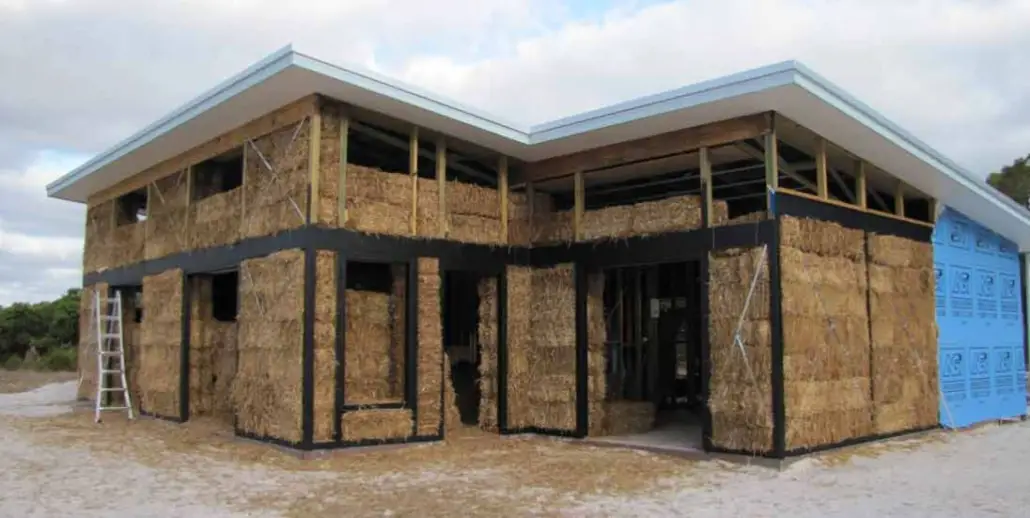Straw Bale Vs Rammed Earth – What Is The Better Build?
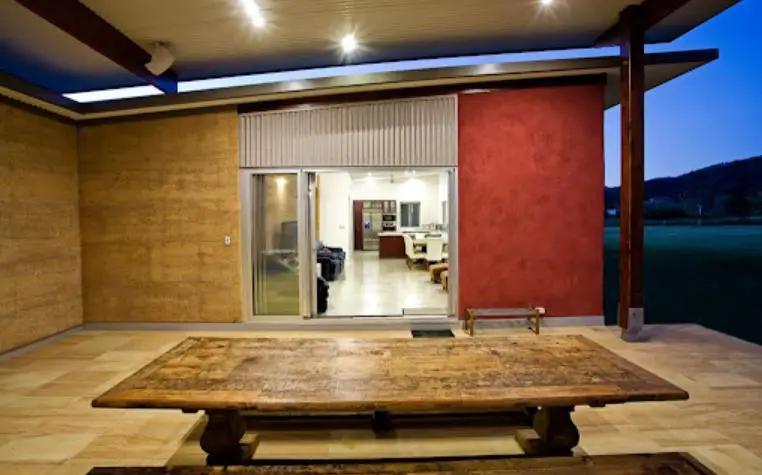
Being able to build your own house with your own two hands has been the dream of many an American since colonial days. These days though, that dream is elusive for most of us. Why? Because not all of us have any experience with construction.
It used to be that you had to build your own house so you either learn construction or freeze to death in the winter. Things are not so dire these days. The flip side is that very few people can boast that they built their own homes.
The dream is still alive though and that is evidenced by the rising popularity of straw bale and rammed earth home construction. Which is the better build though? In the following article we will be comparing the merits and qualities of rammed earth and straw bale home construction.
Overview Of The Two Construction Styles
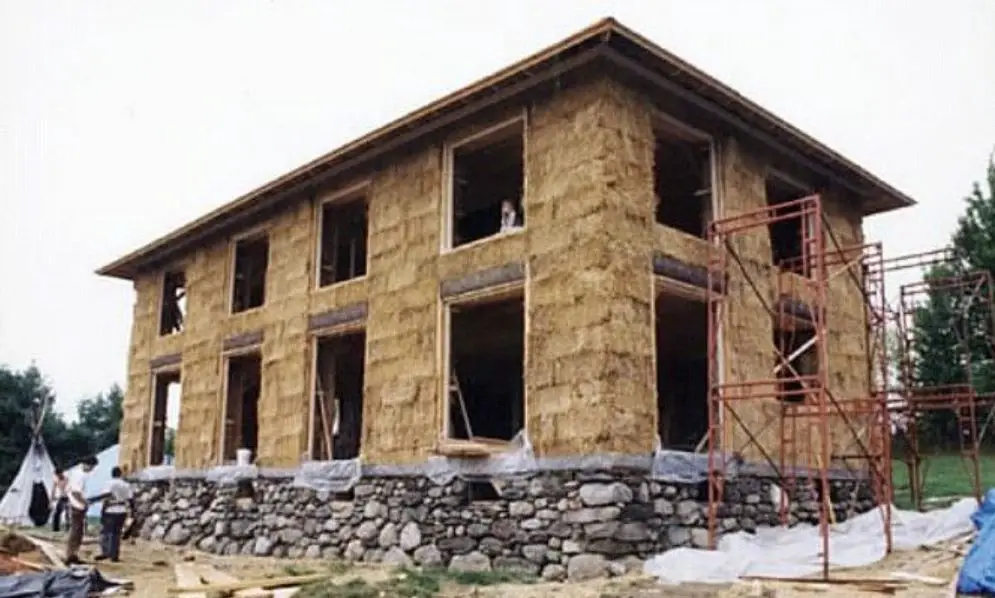
It is estimated that straw bale homes stretch back to pre-colonial days but the first documented instance of straw bale construction was in 1896 when straw bales were used to build a schoolhouse in Nebraska.
While they gained in popularity for a while, straw bale construction was largely abandoned with the advent of modern construction materials around the 1930’s and 40’s.
Rammed earth construction stretches as far back as the Great Wall of China and was also prevalent in Europe. Today, rammed earth construction is still around – just not so much.
No matter how old, both rammed earth and straw bale construction have a couple of things in common. Firstly, they are relatively simple methods of construction that require little construction background.
Secondly, they are affordable methods of construction that rely on materials that can be easily sourced from your immediate environment or other local suppliers.
Straw Bale Construction
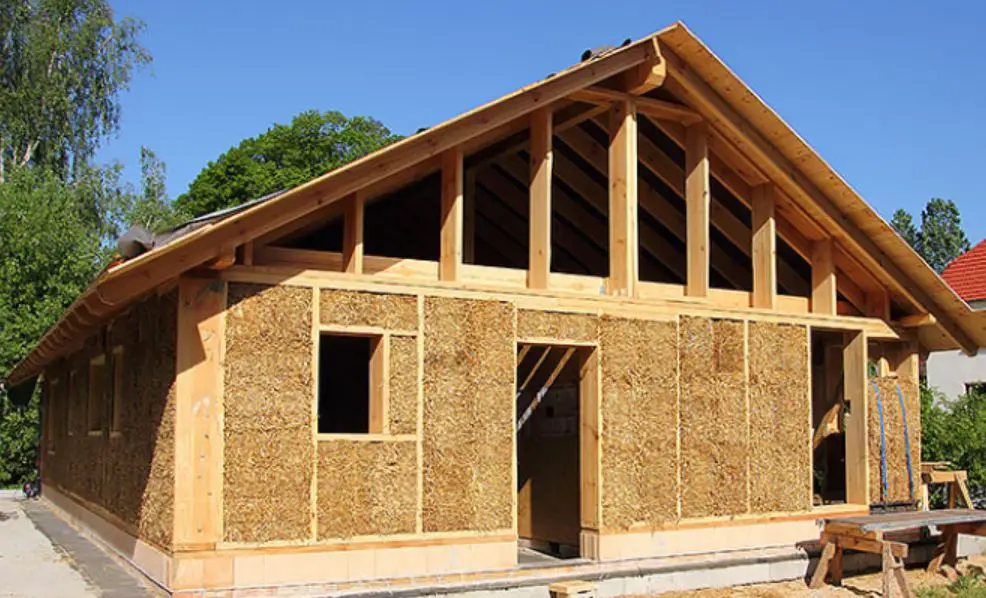
Straw bale construction is exactly what it sounds like: bales of straw are stacked on top of each other to form a wall or an entire structure.
Straw bale homes feature thick walls and provide an eco-friendly alternative to traditional home construction because they are essentially made from waste material.
The biggest challenge with straw bale is to keep the bales dry which can be difficult if you are in a changeable climate.
Rammed Earth Construction

Rammed earth is another eco-friendly style of home construction because it doesn’t require building materials that have to be manufactured in a mill or factory.
Instead, a frame for the walls is formed (usually with plywood) and then a mixture of earth, sand and maybe cement is poured into the framing.
Quick Comparison
Straw Bale |
Rammed Earth |
|
Cost |
Relatively Inexpensive |
Relatively inexpensive |
Heat Retention |
Could be lacking |
Good thermal mass |
Footprint |
Rather large since the walls have to be thick |
Could be relatively low if you don’t want to add a second floor |
Why Might you Choose a Straw Bale House Over a Rammed Earth House?

Family Construction
Straw bale homes are safer to build so you can get your family involved in certain stages
Good for the Environment
Straw bales are made from Eco-waste material (stalks of grains) which is sustainable.
Quick Construction
Building a rammed earth home can be very labor-intensive and time-consuming compared to straw bale construction.
Simpler Construction
Building a straw bale home usually takes less architectural and design know-how than rammed earth homes.
Easy Adaptability
Making alterations or additions to a straw bale house is typically easier than with a rammed earth house.
Why Might you Choose a Rammed Earth House Over a Straw Bale House?
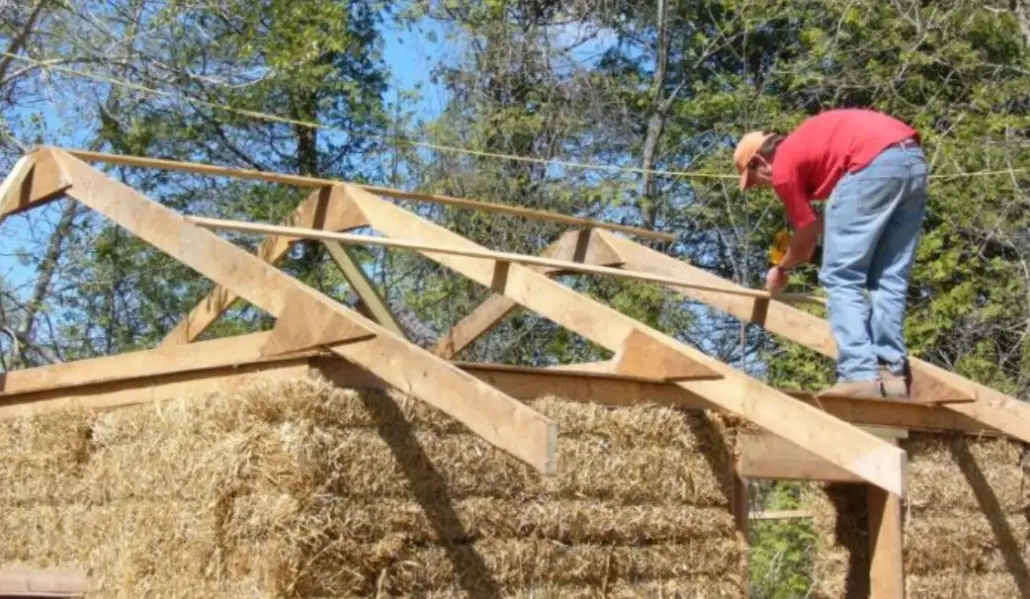
Thermal Mass
A rammed earth house has a higher thermal mass than a straw bale house.
Desert Climates
You might choose a rammed earth house over a straw bale house if you live in a dry, warm, desert climate because they retain heat better.
Sound Insulation
Because of the thickness and density of rammed earth walls, they are very good at insulating sound.
Footprint
If you want a single-story home, rammed earth will provide a smaller footprint on your land than a straw bale home.
Fire Resistance
Earth, sand and even cement are not flammable materials so rammed earth homes are safer from fires than straw bale homes.
Straw Bale Construction Pros & Cons
Pros:
- Relatively simple construction
- May not need a traditional foundation
- Thick walls
- Sustainable
- Easy to make alterations
- Exterior can be stuccoed to improve water resistance
Cons:
- Getting permits could be tricky
- Rodent infestation concerns
- Could be difficult to find a contractor who specializes in straw bale home construction
- Not the best option if you live in a wet region of the country
Rammed Earth Construction Pros & Cons

Pros:
- Provides great thermal mass
- Keeps the interior cool when it’s hot outside and warm when it’s cold outside
- Great sound insulation
- Fire-resistant
- Materials can be easily sourced
- Good for the environment
Cons:
- Labor-intensive construction
- Could take a lot of time to build a home
- They may need larger roofs in wet climates
- Getting permits may be difficult
Can You Combine The Two Methods?
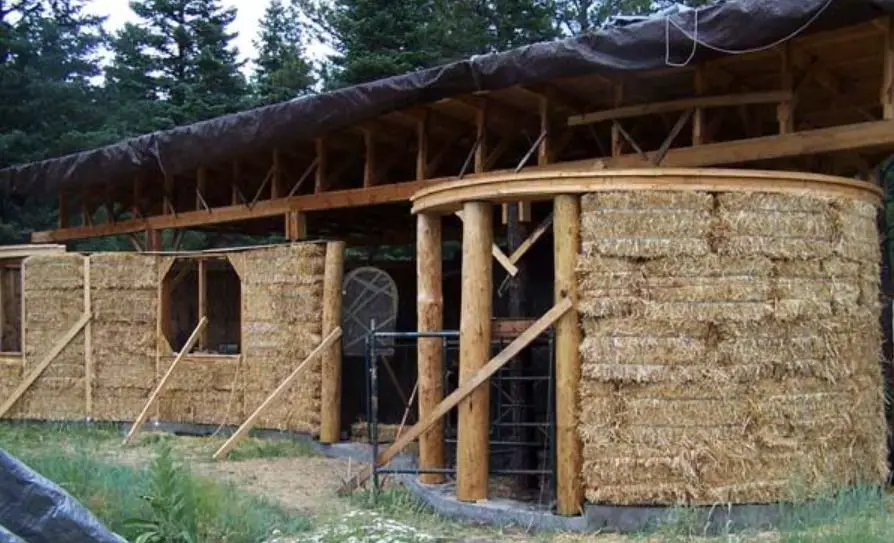
In some cases, yes.
In fact, combining rammed earth and straw bale construction provides great thermal performance and can save you a lot of money as opposed to going with all rammed earth construction.
Which One Is More Expensive?
Rammed earth construction tends to be more expensive because the process is more involved.
A frame needs to be built for the walls, the material has to be sourced and mixed, then the rammed earth needs to be packed into the frame and allowed to dry.
Which Takes Longer To Build?
Again, because of the curing (drying) time and the more involved construction process, a rammed earth home will take longer to build than a straw bale house.
However, if you are not working with a contractor and are handling the construction of a straw bale house on your own for the most part, the time to complete it may be comparable to building a rammed earth home.
Which Lasts Longer?
Assuming that both a straw bale house and a rammed earth house were built correctly, a rammed earth house will last longer.
When done right, a rammed earth house can last hundreds of years. Even when a straw bale house is built expertly, you can only hope to get about 100 years out of it.
Which Climate Suits Each Type?
This is another arena in which both types of homes perform similarly. In general, you want to avoid rainy climates for both of these types of houses.
While rammed earth homes perform a bit better in moisture than straw bale homes, they are both ideal for dry, arid and warmer climates.
Which One Provides More Warmth
This is debatable because you can stucco straw bale walls to help retain more heat.
At the level of basic construction though, rammed earth will provide better thermal mass. It is also very important to consider what type of climate you are building the house in and the orientation.
Rammed earth homes that do not have a broad south-facing side may not collect enough heat in the walls during the day to warm the house during the night.
Which is More Durable
While one of the benefits of having a straw bale house is that it provides a good deal of protection from earthquakes, rammed earth homes tend to last longer because they are not prone to rodent infestations and stand up better to moisture exposure.
Rammed earth walls are also made of a very dense material. They are harder and more rigid than walls built of straw bales which, 9 times out of 10 is going to lead to a more durable building overall.
Other Methods of Home/Wall Construction
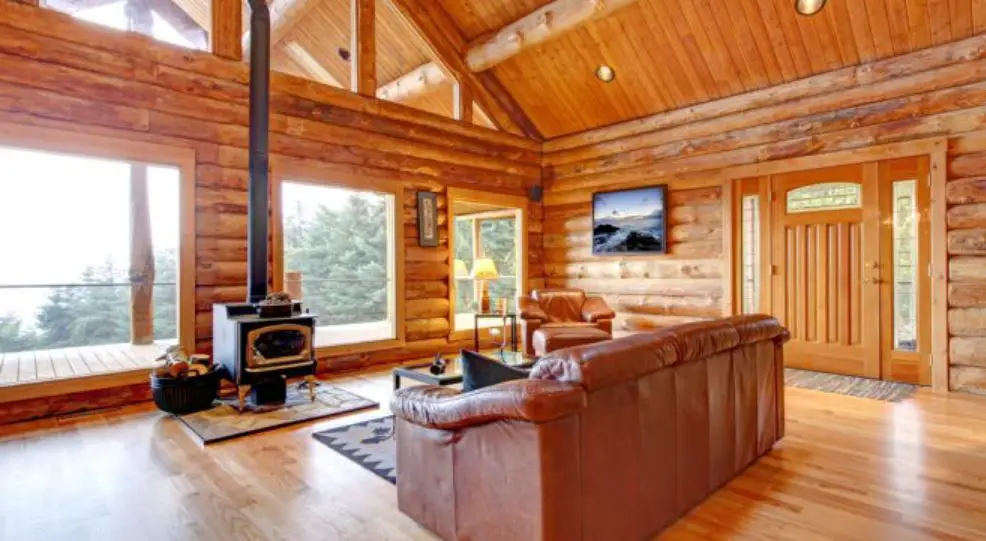
Stick Built Homes
Stick built homes are the ones you see when you drive around your neighborhood.
They are made from wood, some type of synthetic insulation and sheet rock. They provide good durability but aren’t so good for the environment in general.
Earthship Homes
Earthship homes use passive solar heating, discarded tires, natural water treatment systems and reuse water to provide a home that is eco-friendly and is meant to help the resident live off the grid.
Cob Construction
Cob construction is similar to rammed earth in that it uses soil and possibly sand as it’s main components.
However, it may also include straw or some kind of fibrous vegetation in the mixture.
Parting Thoughts
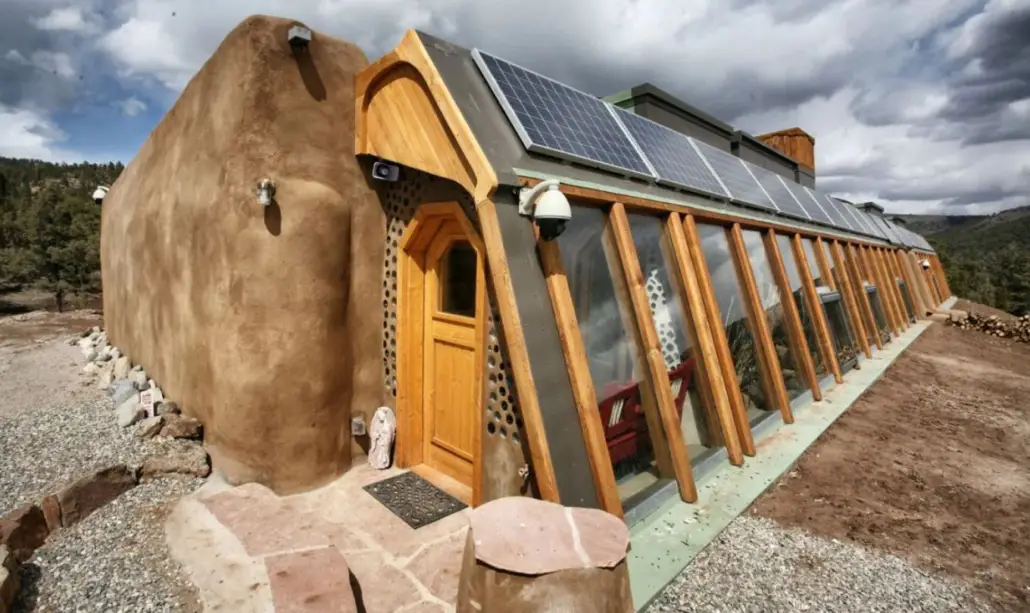
So, which is the better build? Straw bale homes or rammed earth homes?
While the answer to that question will largely depend on where you intend to build your home, how much time and money you have to spend and whether or not you have any help, in general, rammed earth homes provide more benefit.
They last longer, will provide more natural warmth than straw bale homes and hold up better in wet conditions. They are a great option if you’re looking for an eco-friendly housing option so learn more about them today!
